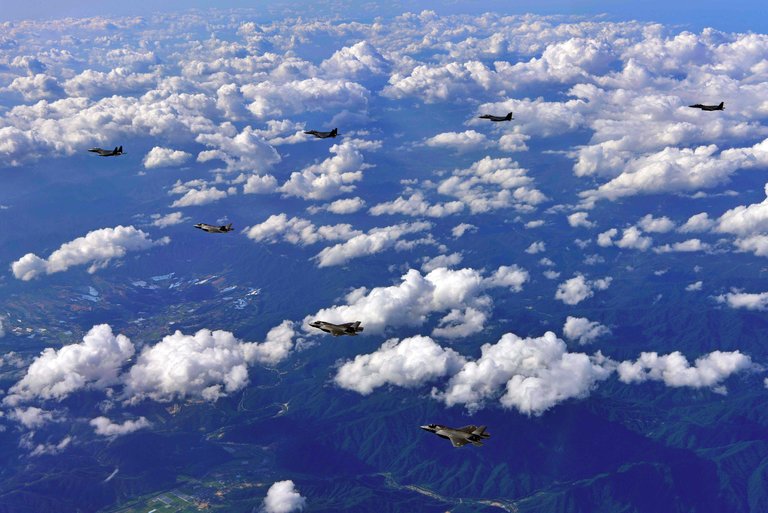
 Are Forced Technology Transfers Forcing the U.S. and China to Rethink How They Do Business?
Are Forced Technology Transfers Forcing the U.S. and China to Rethink How They Do Business?It has been two weeks since the Trump Administration passed an executive order to "investigate whether to investigate" China's laws related to IP and technology, and opinions have increased in DC in Beijing about the way this investigation should be handled, and what really is the root of the tension. The overarching narrative that is raising concern in the U.S. is the requests by Chinese companies to transfer technology to Chinese firms when operating in China. The Washington Post reported that, "More than 20 percent of 100 American companies that responded to a survey by the U.S.-China Business Council said they were asked to transfer technology in the past three years as a condition of market access."
In a provocative post on China Law Blog, Dan Harris, a lawyer who claims to have worked on hundreds of transactions involving IP, doesn't agree with the narrative that the Chinese government is forcing his clients to relinquish IP to Chinese firms. Instead, he describes the many U.S. firms he advised who were "simply willing to take huge risks either because they could not grasp the risks or because they felt they had no other choice for financial reasons." In many cases, these U.S. firms were willing to depart with their IP at a very low cost because of their overriding desire to do business in China. He doesn't deny that forced technology transfers can happen -- especially in areas critical to national security -- but feels that this is secondary to bigger issues U.S. companies are facing: "When I talk with American and European and Australian companies about China, their biggest legal complaint is invariably how expensive it is for them to comply with China laws and how they resent that their Chinese competitors generally are not held to the same legal standards."
Meanwhile, on the other side of the Pacific, the U.S. may seek to increase pressure on U.S. firms hoping to continue receiving Chinese investment -- especially in areas designated critical to the U.S.'s advantage. One such case explained in BloombergGadfly is between Canyon, a Silicon Valley-based private equity firm, and Lattice, a company that makes chips with potential military applications. The rub: Canyon is owned by a Chinese state-owned asset manager, yet both are planning to take their case straight to Trump (who would have the final say on any issue raised by CFIUS). The article continues, "We'd normally expect a president to heed the recommendations of a panel of experts -- Barack Obama turned down a Chinese acquisition of Aixtron SE after CFIUS declined to give it a green light. But Trump has torn up the presidential playbook.This is exactly what Canyon is betting on, and it clearly likes the odds that Lattice and its team of lobbyists can convince POTUS to let the deal through."
While U.S companies are willing to still do business with companies in China and and court Chinese investment, many are also voicing alarm at what is perceived to be a threat to U.S. national security. In a commentary for The Hill, John Pyrovolakis argues that the U.S. needs to make CFIUS more robust, and also step up its funding in in research and development: "The lure of Chinese capital must be dimmed. That imperative requires the United States to more actively support technology startups and increase research and development spending, not cut it as the administration has proposed."
As the U.S. and China continue to lead the world in developing future technologies like supersonic trains, drone delivery, and artificial intelligence, it seems more important than ever that the U.S. and China work to establish corporate best-practices and global governance rules to govern these new technologies. As Li Zheng and Niu Shuai write in China-US Focus, among the 100 most promising AI companies published by CB Insights, "59 are from the United States and 27 from China. Given their respective status, cooperation between China and the United States in AI is crucial."
 China and India Back Off Before BRICS
China and India Back Off Before BRICSFor the past 12 weeks, China and India have faced off over 269 sparsely-populated square kilometers in Western Bhutan. But just as international commentators seemed convinced that the two regional powers had backed themselves into a corner through militant displays, and rhetorical 'red lines', both sides declared a mutual disengagement just days before the BRICS summit scheduled to begin on September 3 in the Chinese city of Xiamen.
The de-escalation has been hailed a diplomatic victory for both sides. But how long will it last?
India and China have faced off frequently since the bloody 1962 war, which ended in China gaining control of territory on the Bhutanese border. However, much of this territory remains disputed, including a 90,000 sq.km area which China calls "Southern Tibet" and India calls "Arunachal Pradesh".
In mid-June, India accused China of constructing a road in the disputed territory towards Doklam plateau, sparking a quick deployment on both sides and a months-long war of words. Throughout the "Sikkim Standoff" China frequently criticized India for trespassing on Chinese territory under the guise of 'protecting Bhutan', and claimed that the violation "took place at the defined Sikkim section of the China-India boundary, which is different in nature from the previous standoffs between the two sides at the undefined sections of the border," Chinese Foreign Ministry spokesperson Geng Shuang said in an official statement. "The Indian side crossed into Chinese territory and changed the status quo. Only when India pulls back its troops, will the status quo be restored." China also claims that the disputed territory has always been under its effective jurisdiction. China and Bhutan have held 24 rounds of boundary negotiations since they launched the talks in the 1980s, and China claims that the boundary has been demarcated since the 1890 Convention - making it the only border area over which there is no contest. But as tension escalated between the two regional powers, worries began to grow of a major conflict between nuclear neighbors.
Thus, it came as a surprise to many when both sides agreed to give some ground following diplomatic talks in order to end the standoff. The Indian government said it had reached an "understanding" with Beijing and had agreed to an "expeditious disengagement" along the border, pulling back troops who had been sent to the disputed area to block the Chinese from building a new road. China ultimately ceded to the compromise, still claiming the disputed territory, but remaining quiet on its intentions to continue to building the road.
Many have hailed this as a case study in conflict resolution, and lauded both sides for the diplomatic victory. "China and India just reminded the world – especially those who have seen the slaughter in the killing fields in the Middle East and Africa – that differences among people can be settled without firing a shot, without anyone getting killed," wrote George Washington University Professor Amitai Etzioni.
However, there is no telling how long this truce will last. Some commentators see this move as a way to get Prime Minister Narendra Modi to the table at the BRICS summit, which will be held in China from September 3-5, and note that the months of tension continue to cast a shadow over the forum. Further, some experts said it was premature to start declaring victory and China continued to be cagey in its official remarks. China's Foreign Ministry spokesman said Tuesday that the country would make plans for road construction "'in accordance with the situation on the ground." On Wednesday, China's Foreign Minister, Wang Yi chided, "We of course hope that India could learn some lessons from this, and [hope] events similar to this one would not happen again." In reporting on the stand-down, The Washington Post further commented that "there is precedence for China not sticking to agreements. In 2012, China and the Philippines agreed to withdraw naval vessels around Scarborough Shoal in a deal brokered by the United States. The Chinese ships never left, and have controlled it since." Other analysts see India's settlement rhetoric as contentious and potentially insincere. Ultimately, an end to this summer's standoff does not mean that the larger territorial dispute has been officially settled. Only time will tell if the armistice will last past the final handshake of September's summit.
 Another North Korean Missile Launch: What's Next?
Another North Korean Missile Launch: What's Next?On August 28, North Korea launched yet another ballistic missile over the northern Japanese island of Hokkaido, landing about 733 miles east of the island. This latest missile test follows a string of short range and intercontinental ballistic missile tests which North Korea has been conducting throughout 2017, and is likely a response to the most recent US-South Korean joint military exercises. The United Nations Security Council convened on the matter, further condemning the Democratic People's Republic of Korea (DPRK) for "its outrageous actions and demands that the DPRK immediately cease all such actions." It was further noted that such actions are "not just a threat to the region, but to all UN Member States."
This most recent round of threats and missile tests have caused other countries to speak up and step in. The United Kingdom, one of the U.S.' strongest political allies in the international arena, has chimed in, with UK Prime Minister Teresa May noting that "They [China] have leverage on North Korea and I believe we should be encouraging China to exercise that leverage to do what we all want, which is to ensure that North Korea is not conducting these illegal acts and we can ensure the security and safety of nations in this region." Further, Mark Field, the UK Minister for Asia and the Pacific within the United Kingdom's Foreign Office, had summoned the Ambassador of North Korea to the UK, to make "clear how strongly the UK condemns the regime's launch of an intermediate range missile over Japan on 28 August." The latest test has also spurred the South Korean President, Moon Jae-in, to shift his position on the Terminal High Altitude Area Defense (THAAD) anti-ballistic missile defense system, calling for the deployment of four new temporary THAAD systems.
The constantly rising tension between North Korea and the United States continues to point to a collision course between the two countries, especially as the Trump administration has continued to indicate that it is considering the option of preventive war. However, some seem to think that "innovative ideas" such as a joint security assurance between China, Russia, and the U.S. towards Pyongyang, in return for their halting their nuclear weapons production program, could be the best way to pursue a peaceful solution to tensions on the Korean Peninsula. Senior CNBC Columnist Jake Novak postulates that a good next step in ramping up pressure on China to take further action on North Korea would be to impose sanctions on the Bank of China, which many speculate is one of the main means by which North Korea has evaded the effects of sanctions imposed on them. It was noted that the earlier U.S. Treasury Department sanctions were not enough. Another solution, which has long been on the table, but not seriously considered, is the "dual freeze" option, in which "North Korea declare a moratorium on nuclear and missile tests while the U.S.-ROK alliance refrains from large-scale military exercises." In a China-US Focus commentary, however, Ryan Mitchell argues what is really at stake for North Korea is their own sovereignty. "Establishing a geopolitically neutral 'federation' among the Koreas actually would be a viable path of compromise. It would assuage Chinese fears of war, regime collapse, and regional instability, South Korean concerns over the risk of unilateral Northern aggression, the North's existential fear of U.S. regime change efforts, and also serve U.S. interests by ending the Chinese-North Korean security relationship."
Whether or not the U.S. will continue to engage in escalations in this game of "chicken" remains to be seen, but options for a non-military resolution to tensions on the Korean Peninsula remain on the table for the Trump administrations consideration. As Samuel Kim writes for China-US Focus, "Only by taking steps to revive the notion of common security, largely by a legally binding peace treaty or non-aggression treaty, can U.S.-DPRK relations and Northeast Asian international relations come to rest on a more stable, safe, and sane footing."
 This Week in Chinese HistoryOn August 29, 1842, Great Britain and the Qing Dynasty of China signed the Treaty of Nanking, ending the First Opium War. The fundamental purpose of the treaty was to change the framework of foreign trade imposed by the Canton System, which had been in force since 1760. Under Article V, the treaty abolished the former monopoly of the Cohong and their Thirteen Factories in Canton. The Qing government also agreed to make Hong Kong Island a crown colony, ceding it to the British Queen "in perpetuity," to provide British traders with a harbor where they could "careen and refit their ships and keep stores for that purpose" (Article III). This was the first of what Chinese leaders would later call the "unequal treaties," due to the fact that the British had no obligations in return. Today, copies of the treaty are kept by the British government and by the Taiwan Ministry of Foreign Affairs at the National Palace Museum in Taipei.
This Week in Chinese HistoryOn August 29, 1842, Great Britain and the Qing Dynasty of China signed the Treaty of Nanking, ending the First Opium War. The fundamental purpose of the treaty was to change the framework of foreign trade imposed by the Canton System, which had been in force since 1760. Under Article V, the treaty abolished the former monopoly of the Cohong and their Thirteen Factories in Canton. The Qing government also agreed to make Hong Kong Island a crown colony, ceding it to the British Queen "in perpetuity," to provide British traders with a harbor where they could "careen and refit their ships and keep stores for that purpose" (Article III). This was the first of what Chinese leaders would later call the "unequal treaties," due to the fact that the British had no obligations in return. Today, copies of the treaty are kept by the British government and by the Taiwan Ministry of Foreign Affairs at the National Palace Museum in Taipei.
Prepared by China-US Focus editorial teams in Hong Kong and New York, this weekly newsletter offers you snap shots of latest trends and developments emerging from China every week, while adding a dose of historical perspective.
- 2017-08-25 Bannon Out: What now for the China-US relationship?
- 2017-08-18 Trump Launches “Investigation on Whether to Investigate” China’s IP Laws
- 2017-08-11 Threats of "Fire and Fury" on the Korean Peninsula
- 2017-08-04 Trump Administration Plans Trade Actions Against China
- 2017-07-28 Xi to Dominate the 19th CPC Congress
- 2017-07-21 A Steely Comprehensive Economic Dialogue
- 2017-07-14 South China Sea Arbitral Award after One Year
- 2017-07-07 Now is the Trump Honeymoon with China Over?
- 2017-06-30 China Passes New Intelligence Law
- 2017-06-23 The End of China’s Honeymoon with Trump & Diplomatic and Security Dialogue
- 2017-06-16 Climate Change and Reliable Data Dealt Blows
- 2017-06-09 India, Pakistan formally welcomed into the Shanghai Cooperation Organization
- 2017-06-02 Once Partners in Fighting Climate Change, Trump Retreats, China Stays Steady on Paris Climate Accord
- 2017-05-26 Chinese Missile Frigates Confronts USS Dewey as U.S. Resumes FON Operations in South China Sea
- 2017-05-19 The Belt and Road Forum Concludes Leaving Behind Mixed Reactions
- 2017-05-12 Beijing, Washington Reach First Trade Deal Under 100-day Plan
- 2017-05-05 Degree of Autonomy Decaying in Hong Kong?
- 2017-04-28 Aircraft Carriers, Submarines, and Jetliners: Now Made in China
- 2017-04-21 Green Cards & Red Lines
- 2017-04-14 U.S Beef for Chinese Chicken? More Hollywood Films in China?